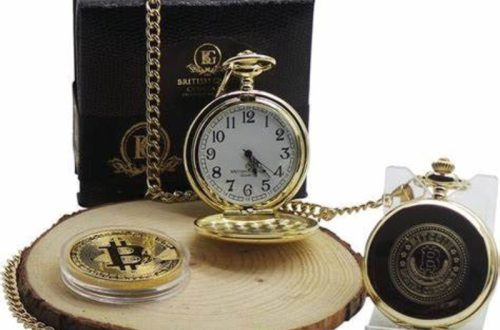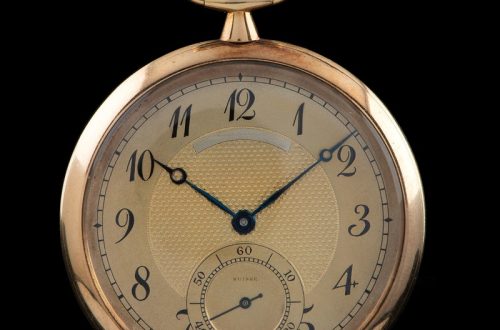Timekeeping has been a human obsession since the dawn of civilization. From sundials to hourglasses, we’ve constantly strived for ways to measure and manage the elusive concept of time. But it wasn’t until the miniaturization of complex mechanics that a truly portable timepiece became a reality, forever changing our relationship with time itself. This is the story of the wristwatch, a testament to human ingenuity and a symbol of our constant pursuit of efficiency.

Part 1: From Pocket to Wrist – A Shift in Utility
The Cumbersome Carry:
For centuries, portable timekeeping relied on pocket watches. Invented in the 16th century, these intricate mechanisms were a marvel of engineering. However, they were bulky and inconvenient, requiring constant fumbling to retrieve and consult. This cumbersome nature limited their use primarily to the wealthy and the elite.
A Practical Need for the Wrist:
The rise of industrialization in the 19th century necessitated a more practical approach to timekeeping. Workers needed a way to track their hours without interrupting their tasks. This need paved the way for wristwatches, initially designed for soldiers who required a hands-free way to synchronize maneuvers during battles.
Part 2: Technological Triumphs – Miniaturization and Innovation
The Quest for Small Scale:

Miniaturizing the complex mechanisms of a pocket watch into a wristwatch presented a significant technical challenge. Watchmakers had to develop smaller, more delicate components while maintaining accuracy and reliability. This period saw advancements in balance springs, hairsprings, and escapements, all essential for precise timekeeping.
Beyond Timekeeping – A Fusion of Function and Fashion:
The incorporation of precious metals and gemstones into wristwatches not only added a touch of luxury but also transformed them into personal adornments that reflected the wearer’s style and social standing. The innovation and creativity of watchmakers and jewelers have led to an expansive array of designs, from minimalist and understated to opulent and ornate, catering to a wide range of tastes and preferences.
Additionally, as fashion trends evolved, wristwatches became essential accessories, complementing and completing various looks, from casual to formal attire. Furthermore, luxury watch brands have collaborated with renowned designers and artists, leading to limited-edition timepieces that are not just functional but also works of art.
As a result, the wristwatch has maintained its relevance as a fashion statement and status symbol, showcasing the harmonious blend of form and function. Its ability to reflect individuality, express personal style, and define elegance has solidified its enduring appeal in the ever-changing landscape of fashion and luxury.

Part 3: A History of Ticks – From Early Innovations to Modern Marvels
Pioneers of the Wrist:
These early wristwatches represented a significant leap in horology, providing a convenient and practical way for people to tell time. As the 20th century progressed, wristwatches became more than just timekeeping devices; they became a symbol of status, elegance, and craftsmanship. Innovations in design and technology continued to drive the evolution of wristwatches, cementing their place as a staple accessory in modern fashion.
Today, the legacy of those early wristwatches lives on, with contemporary watchmakers drawing inspiration from the craftsmanship and innovation of their predecessors. The historical significance of these timepieces, coupled with their enduring appeal, ensures that wristwatches remain a timeless and cherished accessory for people around the world. From the functional wristwatches of the past to the luxurious timepieces of today, the evolution of wristwatches is a testament to the enduring allure of these remarkable devices.
Quartz Crisis and the Digital Revolution:

This revival of interest in mechanical watches can be attributed to a growing appreciation for traditional craftsmanship, as well as a desire for timeless and enduring items in an increasingly disposable society. As a result, mechanical wristwatches have become synonymous with luxury, elegance, and sophistication. They are not just timekeeping tools but also symbols of status, taste, and heritage.
Furthermore, the rise of the vintage and retro trends in fashion and accessories has also contributed to the resurgence of mechanical wristwatches. Their timeless appeal and the stories they carry from the past have captured the imagination of a new generation of aficionados, further solidifying their position as enduring and cherished items.
As a result, mechanical wristwatches have successfully weathered the storm of technological advancements and continue to hold a significant place in the world of luxury goods, symbolizing an appreciation for the finer things in life and an enduring link to the past.
Part 4: The Enduring Legacy – A Timeless Symbol
Beyond Utility – A Statement of Style:

Moreover, mechanical wristwatches have a charm and elegance that is unmatched by their digital counterparts. The intricate craftsmanship and attention to detail required to create these timepieces make them not just functional items, but also works of art. The ticking of a mechanical watch, powered by tiny gears and springs, provides a sense of connection to the history of horology and the mastery of human engineering.
Furthermore, mechanical wristwatches often hold sentimental value, passed down through generations as heirlooms. They are symbols of tradition, commitment, and excellence, making them more than just a way to tell time. In a world filled with mass-produced, disposable goods, the enduring appeal of mechanical wristwatches lies in their ability to stand the test of time, both in terms of their durability and their timeless style. Therefore, it is safe to say that mechanical wristwatches will always have a place in the modern world, treasured for their artistry, craftsmanship, and enduring allure.
A Celebration of Craftsmanship:
While digital timekeeping dominates daily life, mechanical wristwatches continue to be a testament to human ingenuity. The intricate mechanisms, meticulous construction, and enduring beauty of these timepieces represent a dedication to craftsmanship that continues to fascinate and inspire.
The story of the wristwatch is a testament to our constant pursuit of innovation and efficiency. From cumbersome pocket watches to the sophisticated marvels on our wrists today, this evolution reflects not only technological advancements but also our changing relationship with time. In a world obsessed with instant gratification, the enduring popularity of the wristwatch reminds us of the value of precision, craftsmanship, and perhaps, slowing down to appreciate the beauty of a well-kept timepiece.


